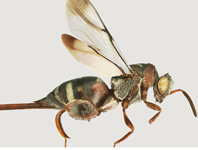Abstract
Centrolene notostictum Ruiz-Carranza & Lynch,1991 is a glassfrog known from the Cordillera Oriental of Colombia—in the Departments of Boyacá, Cundinamarca, Norte de Santander and Santander (Frost 2017)—and the Venezuelan versant of the Sierra de Perijá (Rojas et al. 2012) from 1600 to 2440 masl. Although males have been found calling on the upper surface of the leaves of ferns and Heliconeaceae on the margins of a small fast-flowing stream (Rojas et al. 2012), no quantitative description of the advertisement call of C. notostictum is currently available. During fieldwork in the Galilea Natural Forest (on the western slope of Cordillera Oriental in the municipality of Villarrica, department of Tolima, Colombia) in 2016 and 2017, we found three vocalizing males of C. notostictum. Herein, we report the first geographic record of this species for the department of Tolima and describe its previously unknown advertisement call.
References
Bernal, M.H., Montealegre, D.P. & Páez, C.A. (2004) Estudio de la vocalización de trece especies de anuros del municipio de Ibagué, Colombia. Revista de la Academia Colombiana de Ciencias Exactas, Físicas y Naturales, 28, 385–390.
Bioacoustics Research Program. (2011) Raven Pro: Interactive Sound Analysis Software. Version 1.4. Computer software. Available from: http://www.birds.cornell.edu/raven (Accessed 2 Feb. 2018)
Castroviejo-Fisher, S., Ayarzagüena, J. & Vila, C. (2007) A new species of Hyalinobatrachium (Centrolenidae: Anura) from Serranía de Perijá, Venezuela. Zootaxa, 1441 (1), 51–62.
https://doi.org/10.11646/zootaxa.1441.1.4Castroviejo-Fisher, S., Guayasamin, J.M., Gonzalez-Voyer, A. & Vila, C. (2014) Neotropical diversification seen through glassfrogs. Journal of Biogeography, 41, 66–80.
https://doi.org/10.1111/jbi.12208Dautel, N., Salgado Maldonado, A.L., Abuza, R., Imba, H., Griffin, K. & Guayasamin, J.M. (2011) Advertisement and combat calls of the glassfrog Centrolene lynchi (Anura: Centrolenidae), with notes on combat and reproductive behaviors. Phyllomedusa, 10, 31–43.
https://doi.org/10.11606/issn.2316-9079.v10i1p31-43Frost, D.R. (2017) Amphibian Species of the World: an Online Reference. Version 6.0. Available from: http://research.amnh.org/vz/herpetology/amphibia (accessed 14 February 2017)
Guayasamin, J.M., Castroviejo-Fisher, S., Trueb, L., Ayarzagüena, J., Rada, M. & Vila, C. (2009) Phylogenetic systematics of glassfrogs (Amphibia: Centrolenidae) and their sister taxon Allophryne ruthveni. Zootaxa, 2100, 1–97.
Rojas, F.J.M., Infante, E.E. & Cabello, P. (2012) New records and distribution extensions of centrolenid frogs for Venezuela. Check List, 8 (4), 819–825.
https://doi.org/10.15560/8.4.819Romero, J., Clavijo, S. & Bernal, M.H. (2015) The advertisement call of three highland endemic species (Anura: Craugastoridae) from the Andean mountains of Colombia. Zootaxa, 4007 (2), 298–300.
https://doi.org/10.11646/zootaxa.4007.2.14Ruiz-Carranza, M. & Lynch, J. (1991) Ranas Centrolenidae de Colombia II. Nuevas especies de Centrolene de la Cordillera Oriental y Sierra Nevada de Santa Marta. Lozania, 58, 1–28.
Señaris, J.C. & Ayarzagüena, J. (2005) Revisión taxonómica de la Familia Centrolenidae (Amphibia; Anura) de Venezuela. Publicaciones del comité Español del programa MAB de la UNESCO, Sevilla, 337 pp.
Twomey, E., Delia, J. & Castroviejo-Fisher, S. (2014) A review of northern Peruvian glassfrogs (Centrolenidae), with the description of four new remarkable species. Zootaxa, 3851 (1), 1–87.
https://doi.org/10.11646/zootaxa.3851.1.1

